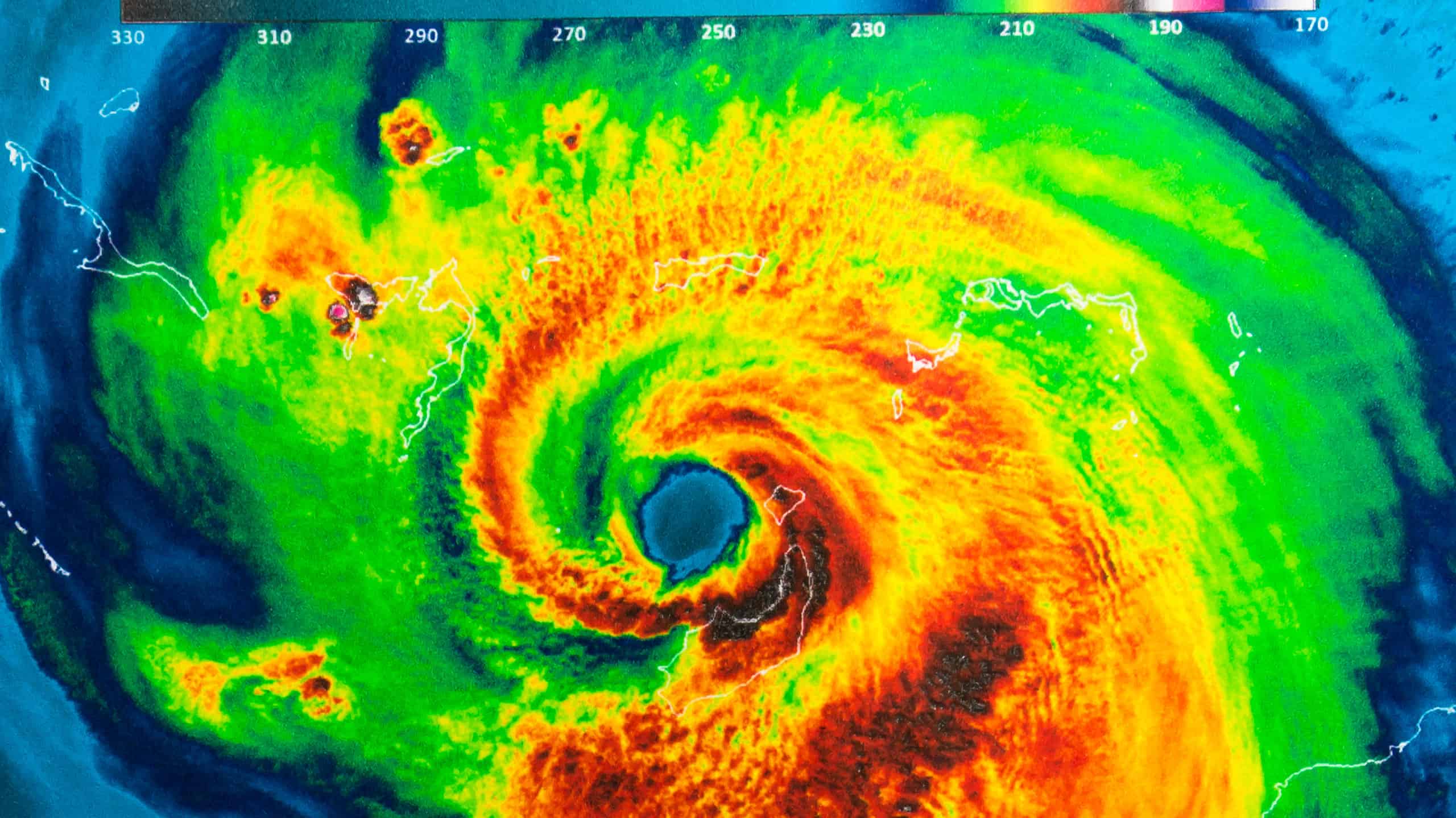In the 1990s, there were a total of 132 storm systems, ranging from tropical depressions to category 5 hurricanes. These storms accumulated over $75 billion in damages while causing almost 13,000 (12,851) fatalities. These storms impacted multiple areas, including the United States. In this article, we are going to address the top 10 hurricanes of this decade that impacted the U.S., broken down by year.
The Saffir-Simpson Hurricane Wind Scale calculates the probable wind-related property damage. All storms produce winds that can be fatal, but big hurricanes are those of Category 3 or above. However, many people sometimes overlook the potential devastation that might be produced by a low-level hurricane or tropical storm when asking what the biggest or most major hurricane is.
Therefore, instead of focusing solely on the category level of the hurricane, many factors have been considered to produce this list. Instead, we will focus on the total destruction in dollars, how each storm impacted the United States, as well as the total number of fatalities associated with these hurricanes below. All fatalities counted are considered both direct and indirect in relation to each storm.

1. 1990 – Tropical Storm Marco
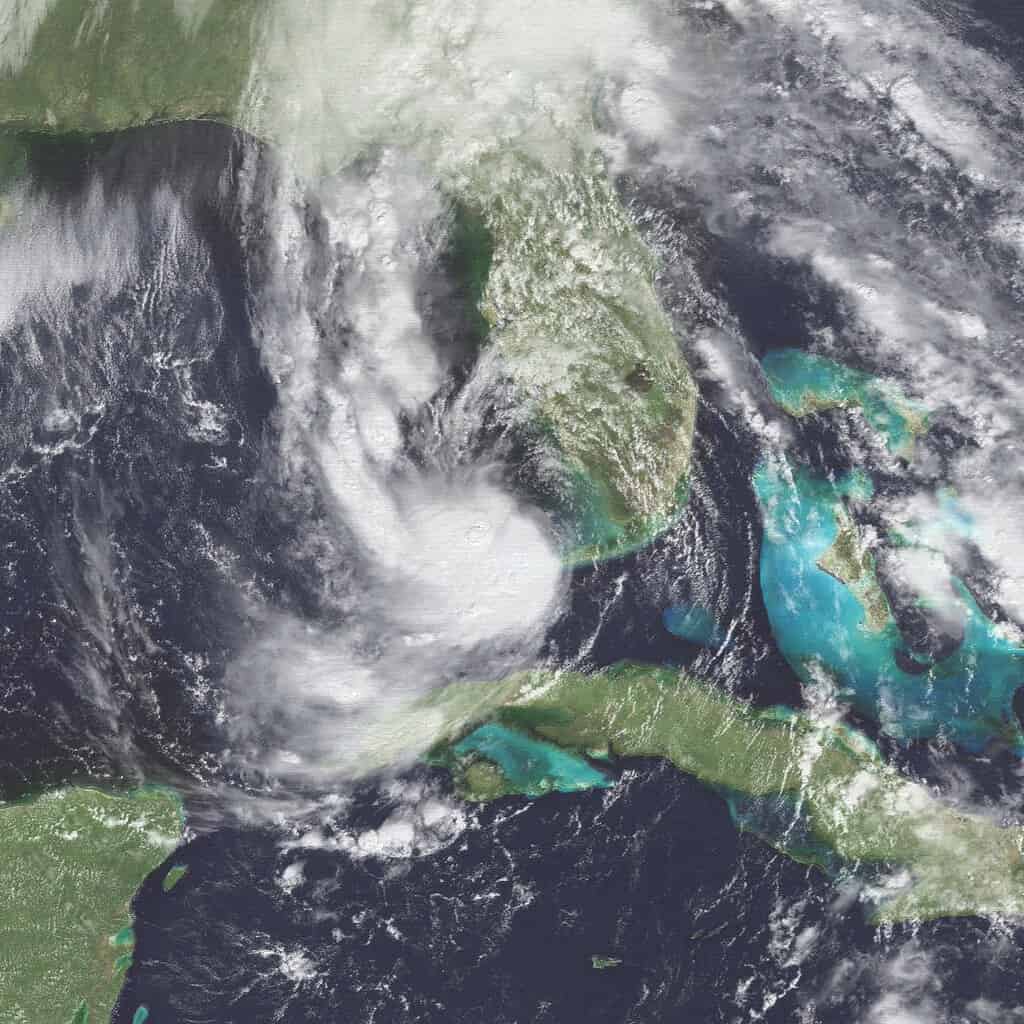
A satellite photo of Tropical Storm Marco which struck the east coast of the U.S. in October of 1990.
©National Oceanic and Atmospheric Administration (NOAA) / Public Domain – Original / License
| Dates Active | October 9 – 12, 1990 |
| Category Status | Tropical storm |
| Damage in Dollars | $57 million |
| Deaths | 12 fatalities |
Throughout the 1990 Atlantic hurricane season, only Marco made landfall in the United States. Tropical Storm Marco produced winds of 65 mph over land while spending most of its time over the western part of Florida. Some homes and roads in Florida were flooded as a result of the hurricane. Although multiple locations saw more than 10 inches of rainfall, Louisville, Georgia, received the greatest amount of rainfall across its route, with 19.89 inches.
Tropical Storm Marco was by far the most catastrophic storm to impact the U.S. in the year 1990. Although it was not technically classified as a hurricane, it was a severe tropical storm that caused roughly $57 million in damages and 12 total fatalities. Although the most impactful for 1990, this was actually one of the more mild storms of the decade.
2. 1991 – Hurricane Bob

High winds from hurricanes can cause significant damage to agriculture and vegetation in the area.
©hbpictures/Shutterstock.com
| Dates Active | August 16 – 20, 1991 |
| Category Status | Category 3 |
| Damage in Dollars | $1.47 billion |
| Deaths | 15 fatalities |
One of the biggest hurricanes of the 1990s in the United States, Hurricane Bob, caused over $1 billion in damage. Bob turned into a hurricane on August 17. In reaction to a subtropical barrier over the Atlantic and a storm over the southeast of the United States, the hurricane soon started to veer towards the north-northeast. Bob became a major hurricane on August 19 after continuing to strengthen off the Carolinas and reaching top winds of 115 mph towards the east of Virginia. Weakening was caused by much lower sea surface temperatures. The heart of Bob passed across Block Island, Rhode Island, after brushing Long Island. It became a Category 2 hurricane less than an hour later when it made landfall in Newport, Rhode Island, carrying winds of 100 mph.
Hurricane Bob was certainly the most impactful hurricane to impact the U.S. for the year 1991. It was classified as a hurricane category 3, causing roughly $1.47 billion in damages and 15 total fatalities. Hurricane Bob was still one of the more mild hurricanes of the decade in terms of damage and deaths.
3. 1992 – Hurricane Andrew
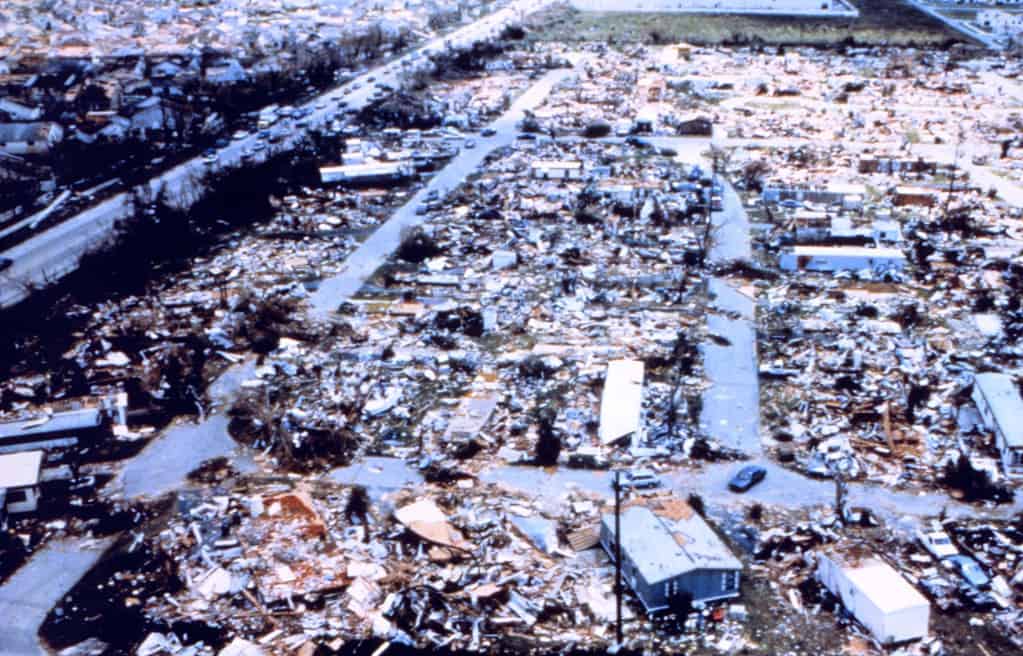
Some of the devastating damage that occurred during Hurricane Andrew.
© – License
| Dates Active | August 16 – 28, 1992 |
| Category Status | Category 5 |
| Damage in Dollars | $27.3 billion |
| Deaths | 65 fatalities |
Hurricane Andrew was one of the biggest hurricanes of the 1990s in the United States. Just before reaching landfall close to Homestead, Florida, Hurricane Andrew strengthened into a Category 5 storm. Over the state, it marginally diminished to a 135 mph storm before regaining strength through the Gulf of Mexico to a 145 mph hurricane. Before making landfall on August 26 to the west of Morgan City, Louisiana, it weakened to a category 3 hurricane. On August 28, it turned to the northeast and lost its tropical characteristics over Tennessee.
Hurricane Andrew was certainly the most devastating hurricane to impact the U.S. in 1992. It was classified as a hurricane category 5, the highest category of hurricanes. Andrew caused roughly $27.3 billion in damages, the highest costs in damages for the entire decade. It also killed 65 people. Hurricane Andrew was one of the more devastating hurricanes of the decade in terms of deaths, but certainly not the top one.
4. 1993 – Tropical Storm Arlene

Satellite footage of Tropical Storm Arlene which hit the U.S. in June of 1993.
© – License
| Dates Active | June 18 – 21, 1993 |
| Category Status | Tropical Storm |
| Damage in Dollars | $60.8 million |
| Deaths | 26 fatalities |
A depression developed into Tropical Storm Arlene on June 19. The next day, Arlene came ashore on Padre Island in Texas. On June 21, the storm quickly lost strength inland and changed into a residual low-pressure system. While most of the precipitation fell between 9 and 11 inches elsewhere, Arlene dumped copious amounts of rain in Texas, reaching a peak of 15.26 inches in Angleton. Numerous highways were flooded all across the state, and water damage was sustained by over 650 properties.
Tropical Storm Arlene was the worst storm to impact the U.S. in 1993. Although it was not technically classified as a hurricane, it was a severe tropical storm that caused over $68 million in damages and 26 total fatalities, worse than some of the higher-category hurricanes.
5. 1994 – Hurricane Gordon
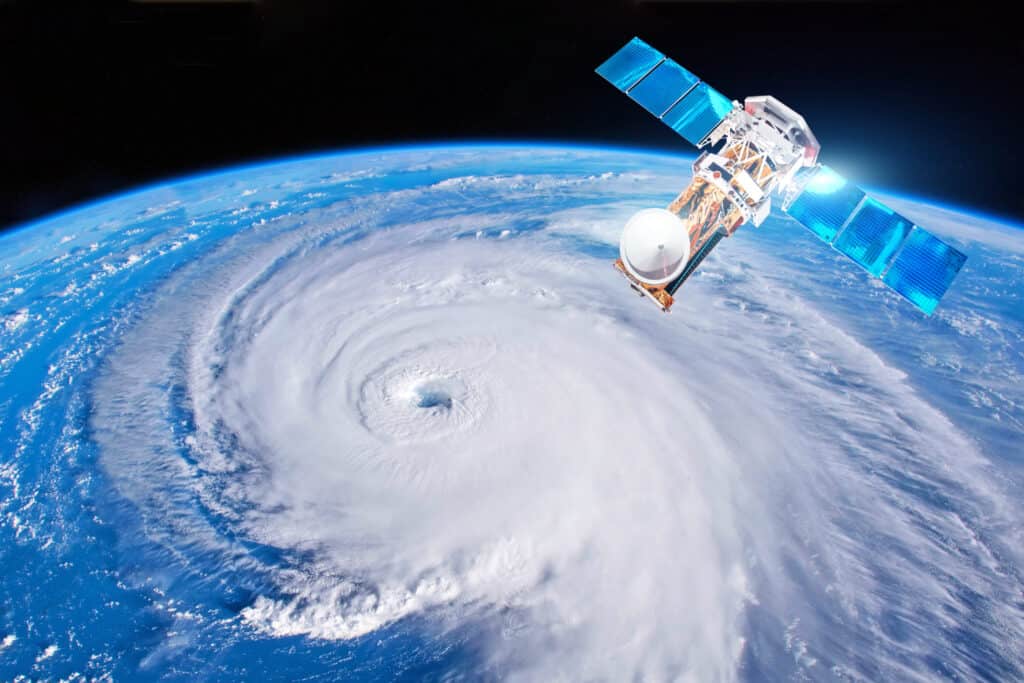
The eye of a hurricane, a view taken from a satellite.
©aappp/Shutterstock.com
| Dates Active | Nov 8 – 21, 1994 |
| Category Status | Category 1 |
| Damage in Dollars | $594 million |
| Deaths | 1,149 fatalities |
The 1994 hurricane season came to an end with Hurricane Gordon. The interaction between Tropical Storm Gordon and a cyclone, when it made its fourth landfall in the Florida Keys, gave the storm sub-tropical characteristics. It headed into the Atlantic Ocean after making another impact across the Florida peninsula. Gordon quickly became a Category 1 storm. However, Gordon’s characteristic eventually moved south, deteriorating into a minor tropical storm while reaching its sixth and final landfall on Florida’s east coast.
Hurricane Gordon was certainly the most catastrophic hurricane to impact the U.S. in 1994. It was classified as Category 1, the lowest category of hurricane. However, it still caused a lot of damage in its wake. It caused roughly $594 million in damages and 1,149 total fatalities. Up until this point, hurricane Gordon was the most devastating in terms of deaths for the 90s, far surpassing Marco, Bob, Andrew, and Arlene.
6. 1995 – Hurricane Opal

Satellite footage of the destructive Hurricane Opal which struck the U.S. in 1995.
©National Oceanic and Atmospheric Administration (NOAA), data superimposed by CooperScience, Public domain, via Wikimedia Commons – Original / License
| Dates Active | Sept 27 – Oct 5, 1995 |
| Category Status | Category 4 |
| Damage in Dollars | $4.7 billion |
| Deaths | 77 |
In October 1995, Hurricane Opal, a massive and destructive Category 4 hurricane, was one of the biggest hurricanes of the 1990s in the United States. It devastated most of the northern Gulf Coast of the U.S. It was the most powerful tropical cyclone of the 1995 Atlantic hurricane season, which was highly active. Before making landfall later that day on the Florida Panhandle around Pensacola, the hurricane rapidly lost strength and was downgraded to barely a Category 3 hurricane. On October 5, when the storm traveled inland and became extratropical, it soon dissipated.
Hurricane Opal was the top hurricane to impact the U.S. in 1994. It was classified as Category 4. It caused almost $5 billion in damages and 77 total fatalities.
7. 1996 – Hurricane Fran
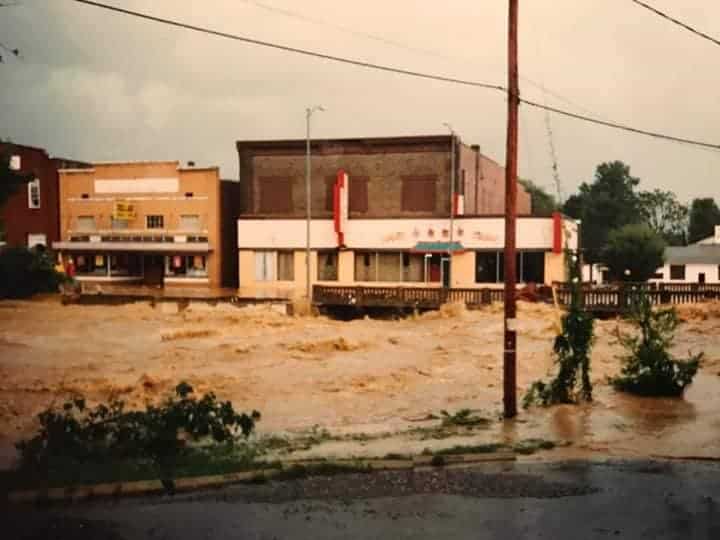
Flooding in Luray, Virginia caused by Hurricane Fran in 1996
© – License
| Dates Active | Aug 23 – Sept 8, 1996 |
| Category Status | Category 5 |
| Damage in Dollars | $5 billion |
| Deaths | 37 |
In early September 1996, Hurricane Fran severely damaged the United States. Fran reached its peak wind speed of 120 mph on September 5. Fran began to lose strength before landfall on September 6 near Cape Fear, North Carolina. In South Carolina, the tail end of Fran caused strong winds and little to moderate rainfall. As a result, multiple trees and powerlines fell, damaging automobiles and leaving more than 63,000 people without electricity. Large waves led to substantial coastal flooding in a few nearby cities as well.
Hurricane Fran was the most devastating hurricane to impact the U.S. in 1996. It was classified as Category 5, the highest category of hurricane. Fran caused roughly $5 billion in damages and 37 total fatalities.
8. 1997 – Hurricane Danny

Satellite view of Hurricane Danny when it was downgraded to Tropical Storm Danny as it moved up the east coast of the U.S.
© – License
| Dates Active | July 16 – 26, 1997 |
| Category Status | Category 1 |
| Damage in Dollars | $100 million |
| Deaths | 9 |
Only Hurricane Danny made landfall in the United States in 1997. Danny first made landfall on the Gulf Coast before moving through the Southeast and eventually affecting sections of New England. At least 36.71 inches of rain fell on Dauphin Island, setting a record for Alabama during the storm. Many Gulf Coast locations had flooding, blackouts, and degradation; rescue operations had to be carried out from flooded roads. On the East Coast, Danny produced tornadoes that did a lot of damage.
Hurricane Danny was the top hurricane to impact the U.S. in 1997. It was classified as Category 1, the lowest category of hurricane. Although not the worst of the decade, it still caused roughly $100 million in damages and 9 total fatalities.
9. 1998 – Hurricane Mitch
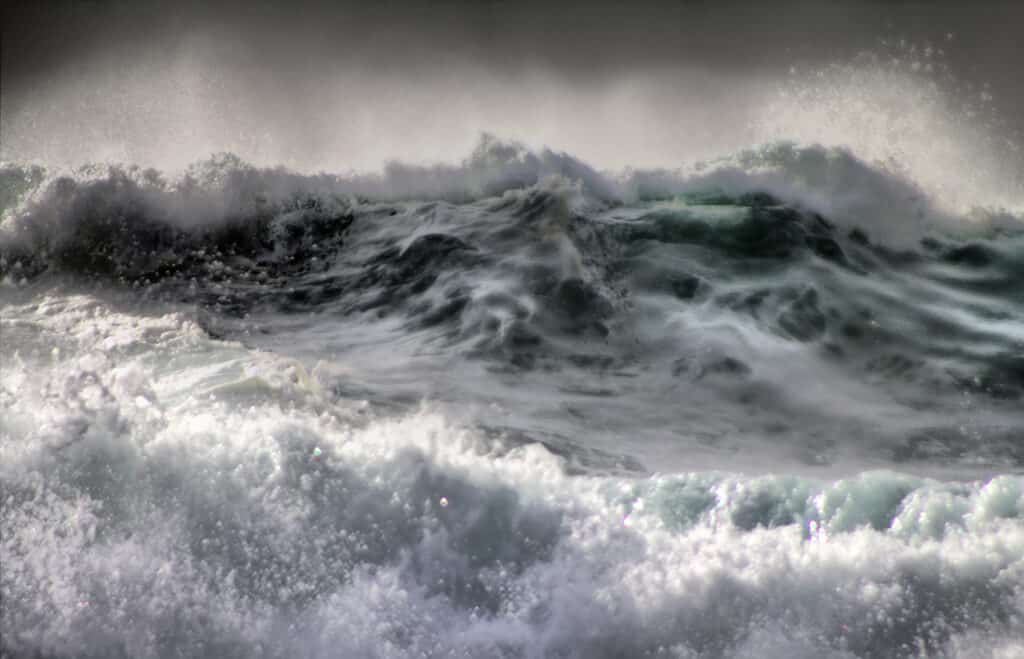
Hurricane Mitch had over 11,000 confirmed deaths with thousands of additional people reported missing. Much of this devastation was due to severe flooding.
©Maximillian cabinet/Shutterstock.com
| Dates Active | Oct 22 – Nov 5, 1998 |
| Category Status | Category 5 |
| Damage in Dollars | $6.08 billion |
| Deaths | 11,374 |
Hurricane Mitch was by far one of the biggest hurricanes of the 1990s in the United States. Not only was Hurricane Mitch the deadliest Atlantic hurricane in 1998, but it was also the second deadliest Atlantic hurricane in history, apart from the Great Hurricane of 1780. Mitch eventually made landfall in Florida as a potent tropical storm after drifting over Central America and regenerating in the Bay of Campeche. It was categorized as Category 5, the strongest category. Despite the fact that Honduras, which accounted for more than half of all fatalities, suffered the most catastrophic effects, a fishing boat capsized in the Florida Keys, killing two people. Most of its fatalities were caused by severe flooding.
Mitch caused $40 million worth of damage in Florida and significant property, infrastructural, and agriculture devastation in Central America. By the end of 1998, at least 11,374 deaths had been recorded, and more than 11,000 people were still unaccounted for; the exact death toll might never be determined. Additionally, hurricane Mitch resulted in almost 2.7 million people becoming homeless. The hurricane was also projected to have caused around $6 billion in total damages.
10. 1999 – Hurricane Floyd
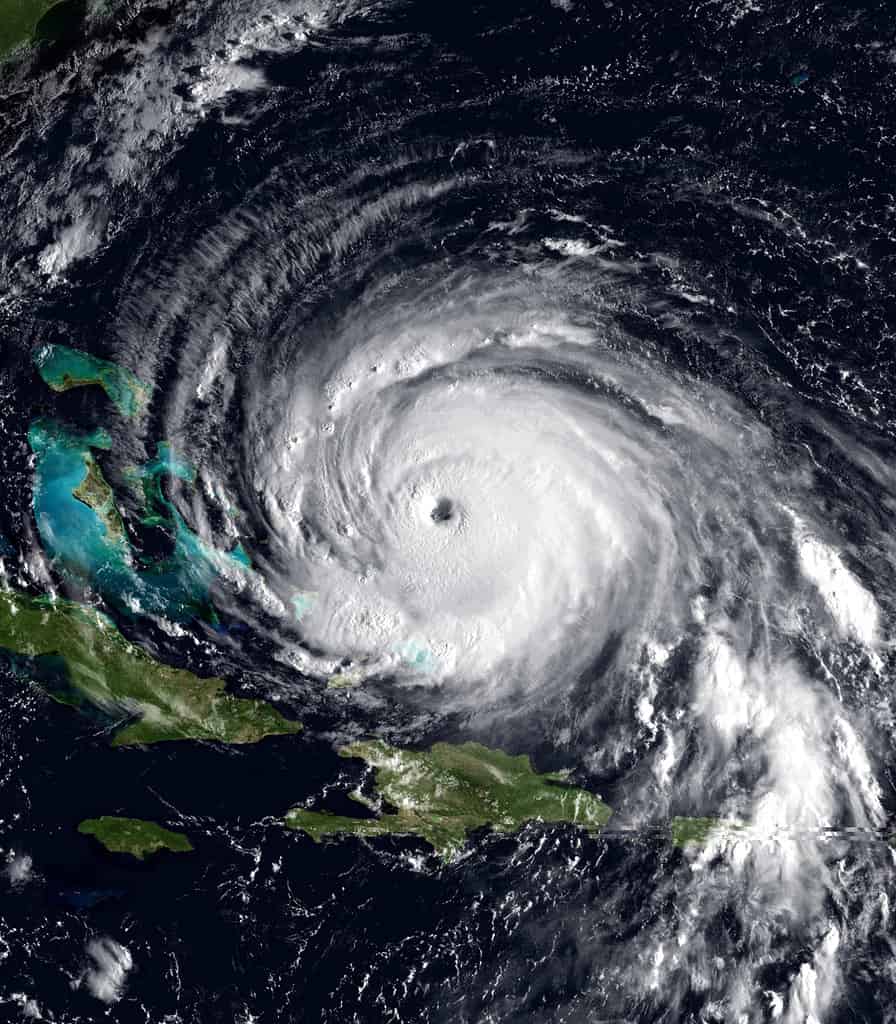
Satellite footage of the destructive 1997 Hurricane Floyd.
© – License
| Dates Active | Sept 7 – 17, 1999 |
| Category Status | Category 4 |
| Damage in Dollars | $6.5 billion |
| Deaths | 87 |
The last and most destructive hurricane to hit the United States during the 1990s was Hurricane Floyd in 1999. It was a category 4 hurricane, with damage estimates of around $6.5 billion. A total of 87 individuals were also killed by it. The Bahamas and the US East Coast were both hit by Hurricane Floyd, an extremely potent Cape Verdean hurricane. 2.6 million coastline residents in five states were ordered to evacuate as Hurricane Floyd approached. This resulted in the fourth-largest evacuation in US history, after Hurricanes Irma, Gustav, and Rita. In terms of gale-force diameter, it was one of the biggest Atlantic storms of its intensity ever recorded.
Floyd was initially expected to hit Florida but turned in a different direction. Instead, the storm drastically lessened before making landfall as a very powerful Category 2 hurricane in the Cape Fear region of North Carolina. It continued to cause havoc as it moved across the Mid-Atlantic and into New England. In Eastern North Carolina, where Hurricane Dennis had just weeks previously made landfall, the hurricane caused severe rainfall. Over the course of many weeks, the precipitation led to widespread flooding. Practically every river basin within the eastern portion of North Carolina surpassed 500-year flood levels.
Wrapping Up the Biggest Hurricanes of the 1990s
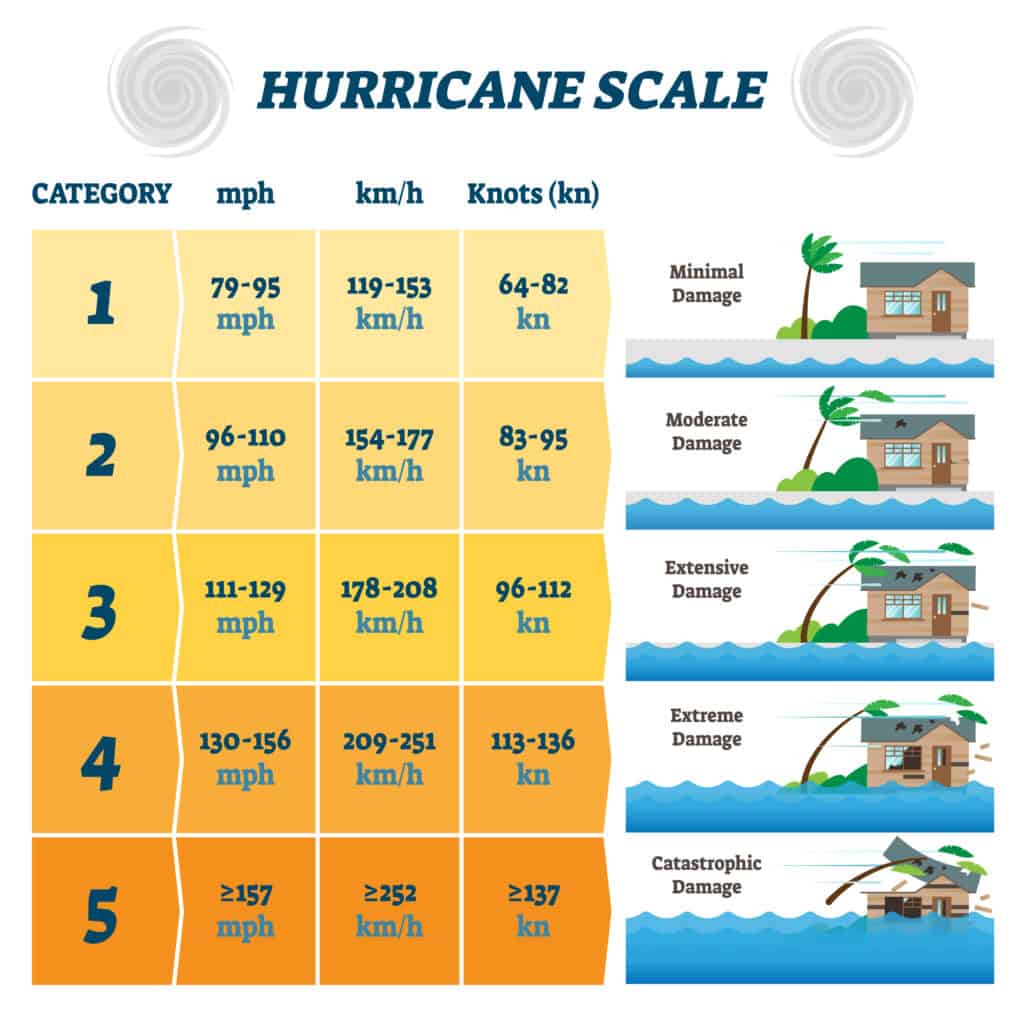
The Saffir-Simpson Hurricane Wind Scale is what the National Hurricane Center uses to categorize storms.
©VectorMine/Shutterstock.com
The Saffir-Simpson Hurricane Wind Scale’s intensity (Hurricane Category 1 to 5 rating) is sometimes confused with the kind of damage that can be anticipated. The greatest sustained wind speed of a hurricane serves as the sole basis for this scale. Other potentially fatal dangers including storm surges, downpour flooding, and tornadoes are not considered by this scale.
Hurricanes of all types can produce fatal flash flooding, winds, and tornadoes, although it is accurate that major hurricanes can cause catastrophic wind damage and severe loss of life merely due to the power of their winds. This is supported by an examination of the statistics and research supporting the storm systems of the 1990s. Examples of this include Hurricane Gordon in 1994, which caused $594 million in damages and 1,149 fatalities. Gordon only received a category 1 hurricane rating, yet it caused the second-highest number of fatalities in the 1990s.
Hopefully, this article has enabled you to understand the damage a hurricane can cause and the many factors that lead to its devastation. Remember to be proactive should you ever be in the vicinity of an active hurricane, and always listen to local authorities advice on evacuation and emergency preparedness.
Summary of The Biggest Hurricanes of the 1990s
Here are the biggest hurricanes that happened in the 1990s:
| Rank | Hurricane | Year |
|---|---|---|
| 1 | Tropical Storm Marco | 1990 |
| 2 | Hurricane Bob | 1991 |
| 3 | Hurricane Andrew | 1992 |
| 4 | Tropical Storm Arlene | 1993 |
| 5 | Hurricane Gordon | 1994 |
| 6 | Hurricane Opal | 1995 |
| 7 | Hurricane Fran | 1996 |
| 8 | Hurricane Danny | 1997 |
| 9 | Hurricane Mitch | 1998 |
| 10 | Hurricane Floyd | 1999 |
Thank you for reading! Have some feedback for us? Contact the AZ Animals editorial team.

